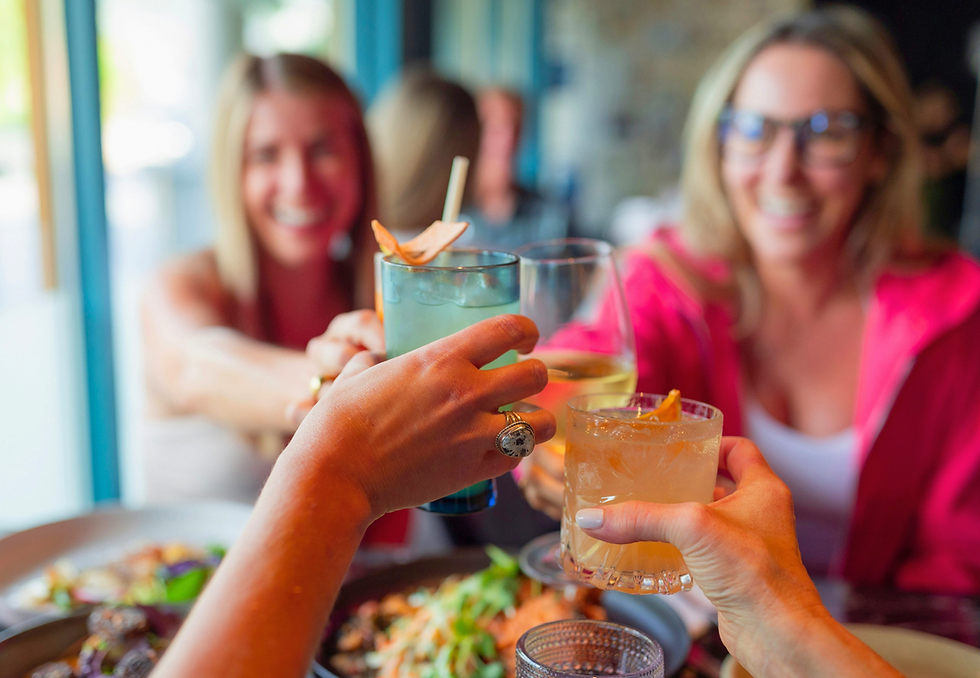Drinks on the rise: pouring pleasure and profit into hospitality
- François Remy

- Sep 3
- 3 min read
Cocktails on tap, water menus curated by a sommelier, customizable sodas: drinks are no longer an accompaniment but a strategic lever. A quiet transformation is sweeping the entire sector, from fast food to fine dining, with a potential significant impact on profitability.

In Sint-Niklaas, the Aperol Spritz now flows freely... from a tap. On the Grand-Place, the La Bella Italia restaurant recently began offering the iconic summer cocktail on tap. Served perfectly measured, directly from a pump connected to a 20-liter keg. An innovation as simple as it is effective, guaranteeing speed of service, consistent quality, and increased profitability. "Customers love it. Many even think it's better than before," the manager told Het Laatste Nieuws . Beyond its practicality, the gesture catches the eye, energizes the bar, and showcases a flagship product of summer terraces.
A change of scenery, and a move upmarket. In Macclesfield, the Michelin-recommended La Popote restaurant is launching the UK's first bottled water menu this year. Like a good wine list, the water menu has been carefully curated by a sommelier. Well, by one of only five sommeliers in the country specializing in water. The offerings are structured around seven premium waters, both still and sparkling, priced between £5 and £19 per bottle (€6 and €22).
The waters are served in wine glasses for presentation and are accompanied by careful storytelling around the regions of origin, between Iceland and Spain. The aim is to offer a refined alternative to those who do not consume alcohol, in a context where, according to chef Joseph Rawlins in the Daily Mail , "one in two tables today includes at least one non-drinker."
Beverages are becoming a destination, for customers and businesses alike
The latest change in scale is more international, but the same usage. At McDonald's, Starbucks, or Dunkin', drinks are no longer just a side. Beverages have become a reason to visit in and of themselves, especially for Generation Z, who are fond of personalized, visually appealing products.
According to Technomic, beverage offerings have grown 9% year-over-year at the 500 largest quick service restaurant (QSR) chains. McDonald's is testing "dirty sodas" and other fruity refreshments, while Starbucks is launching a sugar-free protein cold foam. The drink is becoming functional, Instagrammable, and highly profitable—a winning combination in a tense market.
During McDonald's latest earnings call, CEO Chris Kempczinski said beverages represent a "big opportunity" for the brand. "It's a growing segment and more profitable than food. So there's a lot of reasons to be interested in it, and that's why we—and I think some of our competitors—are very excited about it," he told analysts, as reported by CNBC . This is particularly because the beverage category allows for many "full-margin products," products that franchisees shouldn't sell off with promotions.
He added that while there are discounted offerings in the beverage category, it also allows for many full-margin products to be offered without franchisees having to sell them off.
Drinks, a strategic lever that is not sufficiently used
In light of these few concrete cases, the profound change highlighted by the industrial analysis Inside the Restaurant Bill: Consumer Spend & Beverages Habits de Gondola Foodservice (GFS) is a perfect example: beverages represent a portion of catering spending, around 20% in Belgium, but they remain largely under-exploited as a strategic category.
In other words, everything the customer can drink is a key issue. The Belgian restaurant market has a declared value of €7.3 billion, which means that the beverage category is worth €1.46 billion.
“In an industry where volume is the driver and margin is a challenge, this leaves clear growth potential,” says Amaury Marescaux, CEO of Gondola Foodservice. “Beverages are no longer just a functional addition. They are evolving to become a strategic layer of the restaurant experience, shaping how guests perceive value, identity, and even hospitality itself.”
Moreover, the author of the GFS analysis observes underlying currents converging in market trends. Creativity reinvented; non-alcoholic drinks become creations in their own right, rich in sensory layers (infusions, fermentations, textures). Cultural readjustment; alcohol is no longer the norm - it is selected, contextualized, challenged. And economic stratification; at the high end, drinks support turnover; elsewhere, they must justify their price by the experience they offer.
“Food and wine pairings in fine dining restaurants can generate up to 40% of revenue,” says Amaury Marescaux. “Meanwhile, in more casual formats, the decision to skip the drinks is often a matter of budget.”
The conclusion is clear: what's in the glass deserves as much attention as what's on the plate. If not more...





